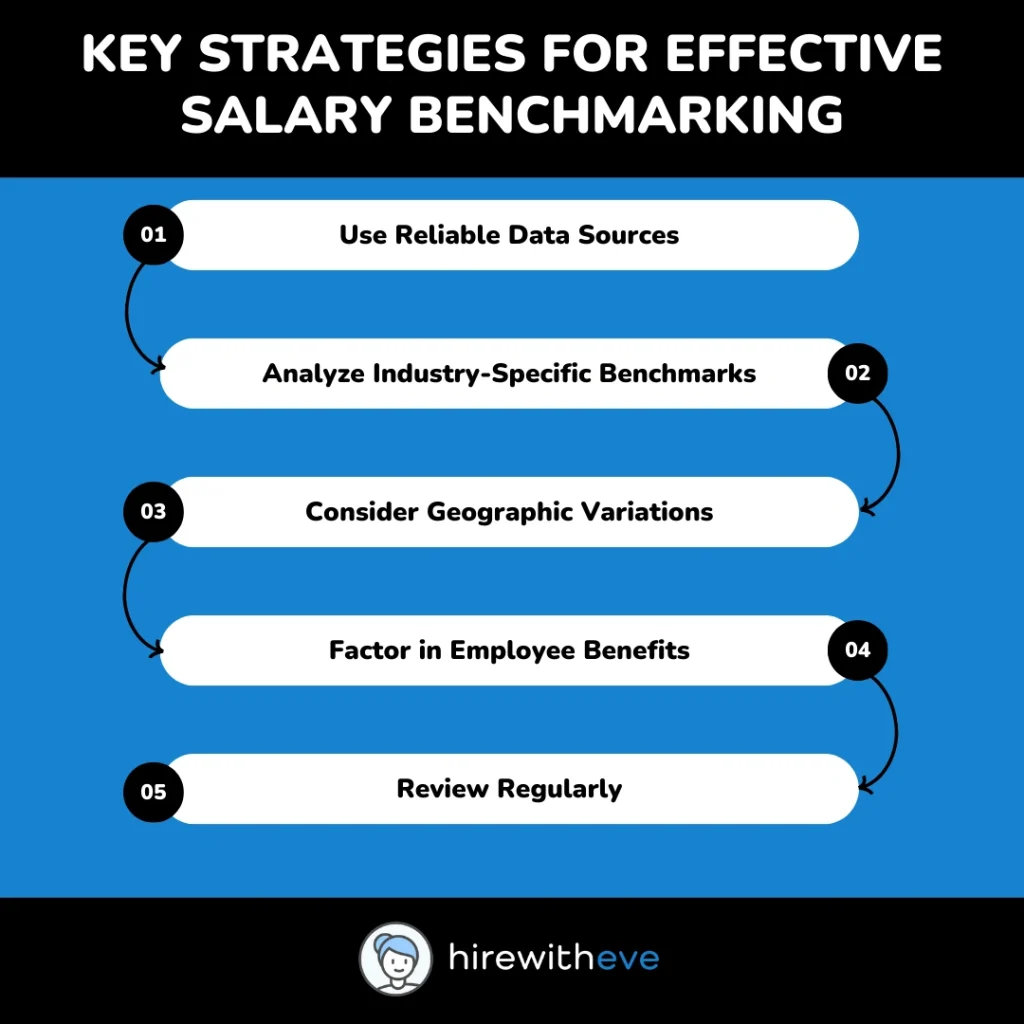Salary Benchmarking Guide: Strategies for Fair Employee Compensation

In today’s competitive job market, ensuring fair and competitive compensation is one of the most critical tasks for HR managers and talent acquisition specialists. Fair employee compensation not only attracts top talent but also helps retain them in the long run. A powerful tool that can help achieve this goal is Salary Benchmarking. It allows organizations to compare their compensation packages with those in similar roles or industries, ensuring that they remain competitive while maintaining fairness.
This blog explores the concept of Salary Benchmarking and its significance in building a successful hiring strategy. We will discuss effective strategies for conducting Salary Benchmarking, the challenges associated with it, and the best practices to ensure a smooth and transparent compensation process.
What is Salary Benchmarking?
Salary Benchmarking refers to the process of comparing an organization’s pay rates with those of its competitors or industry standards. This practice ensures that the salary offered for each role is competitive in the current job market. By analyzing compensation data from industry peers and similar job functions, companies can set salary ranges that attract and retain the best employees.
HR managers and talent acquisition specialists often use Salary Benchmarking to ensure internal equity and external competitiveness. This process is essential for maintaining employee satisfaction, reducing turnover, and promoting organizational fairness. It also helps companies stay ahead of changing market trends, ensuring they don’t fall behind in offering attractive compensation packages.
The Importance of Salary Benchmarking in Talent Acquisition
In the realm of talent acquisition, compensation plays a pivotal role in the decision-making process of candidates. When companies offer competitive salaries through accurate Salary Benchmarking, they enhance their ability to attract top talent. Furthermore, fair compensation promotes a positive work culture and reduces the risk of dissatisfaction or high turnover rates. Salary Benchmarking also gives companies a clearer understanding of the broader market trends and how they compare. In an age of increasing transparency, with websites like Glassdoor and PayScale offering compensation data publicly, candidates are more informed than ever.
Therefore, failing to conduct proper Salary Benchmarking can result in offering less attractive compensation packages, putting the organization at a significant disadvantage.
Salary Benchmarking goes beyond just pay; it also includes total compensation packages, benefits, bonuses, and other perks. A well-benchmarked salary package can make an organization stand out in the eyes of potential employees, while also ensuring existing employees feel fairly compensated.
Key Strategies for Effective Salary Benchmarking
Salary Benchmarking can be a complex process, but with the right strategies, it becomes much easier to implement effectively.
Below are key strategies that HR managers and talent acquisition specialists can employ for successful Salary Benchmarking:

Use Reliable Data Sources
One of the most important aspects of Salary Benchmarking is access to accurate and reliable data. Using industry reports, salary surveys, and compensation databases helps to provide the necessary information for setting competitive salary benchmarks. Sources like PayScale, Mercer, and Willis Towers Watson offer robust compensation insights that HR professionals can rely on.
Analyze Industry-Specific Benchmarks
Every industry has its unique compensation structure. When conducting Salary Benchmarking, it’s critical to take industry-specific benchmarks into account. For example, salaries in the tech industry may differ significantly from those in manufacturing or healthcare. This differentiation helps tailor your benchmarks to meet the expectations of your target candidates.
Consider Geographic Variations
Salary structures often vary by location due to cost-of-living differences. A role in New York City may have a significantly higher salary than the same role in a smaller city or rural area. During the Salary Benchmarking process, it’s crucial to account for these geographic variations to ensure the compensation remains competitive and fair.
Factor in Employee Benefits
Compensation is not only about the base salary. Employee benefits such as health insurance, retirement plans, paid time off, and flexible work arrangements should also be considered during the Salary Benchmarking process. These benefits can add substantial value to a total compensation package, making the organization more attractive to potential hires.
Review Regularly
The market is continuously evolving, and so are salary expectations. To maintain a competitive edge, Salary Benchmarking should be a regular activity. Frequent reviews help HR professionals stay updated with market trends, ensuring they offer salaries that are in line with the industry standard and external environment.
Common Challenges in Salary Benchmarking
While Salary Benchmarking provides numerous advantages, it also comes with its challenges.
Being aware of these challenges can help HR managers and talent acquisition specialists navigate them effectively:
Limited or Outdated Data
One of the main challenges in Salary Benchmarking is accessing up-to-date and relevant data. Compensation data can quickly become outdated, especially in industries with rapid growth or high competition. Using old data can result in inaccurate benchmarks, potentially leading to salary offers that are either too high or too low.
Internal Pay Discrepancies
During the Salary Benchmarking process, organizations might uncover discrepancies in their internal pay structure. For instance, they may find that employees in similar roles are being compensated differently, leading to issues with internal equity. Resolving these discrepancies requires careful communication and planning to avoid employee dissatisfaction.
Geographical and Industry-Specific Variations
As mentioned earlier, salary expectations can vary significantly by location and industry. Balancing these variations while conducting Salary Benchmarking can be tricky. Offering a salary that’s too high or too low compared to industry norms can either strain the budget or make the organization less competitive in the job market.
Balancing Cost and Competitiveness
HR managers often face the challenge of balancing the company’s budget constraints with the need to offer competitive salaries. Proper Salary Benchmarking helps achieve this balance, but it may still be difficult to find the right compensation levels that meet both employee expectations and organizational capabilities.
Conclusion
Salary Benchmarking is a crucial process for ensuring fair and competitive employee compensation. For HR managers and talent acquisition specialists, conducting regular Salary Benchmarking allows them to maintain a balanced approach to compensation, addressing both the needs of the employees and the financial realities of the organization.
From accessing reliable data to factoring in geographic and industry-specific variations, effective Salary Benchmarking ensures organizations stay competitive in the talent market.
While challenges like outdated data and internal discrepancies may arise, addressing these through proper benchmarking strategies can lead to more equitable compensation structures. This, in turn, boosts employee satisfaction, retention, and overall organizational success.
By mastering Salary Benchmarking, HR professionals can create a transparent, fair, and attractive compensation system that drives the organization forward in today’s ever-changing job market.
